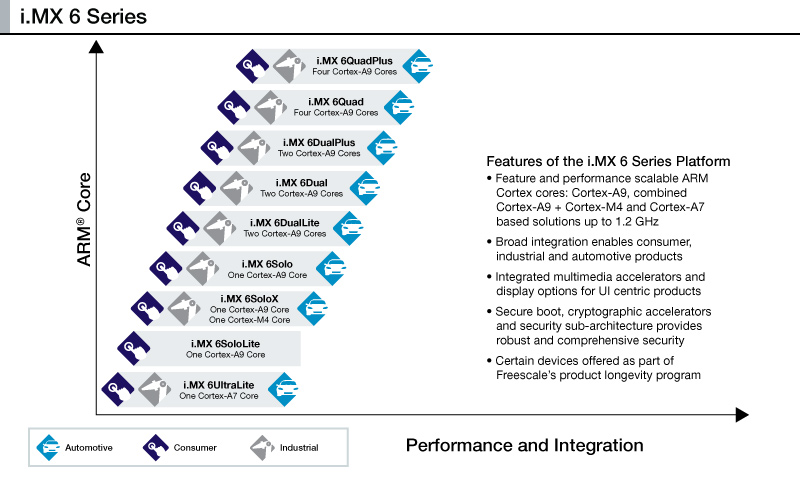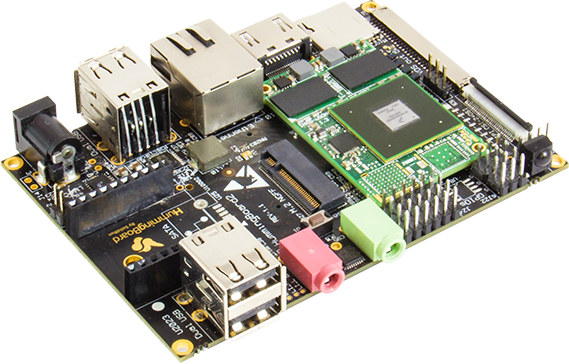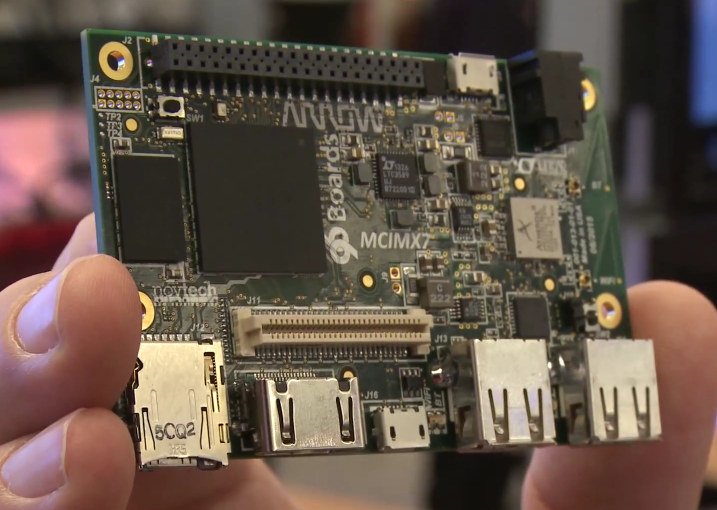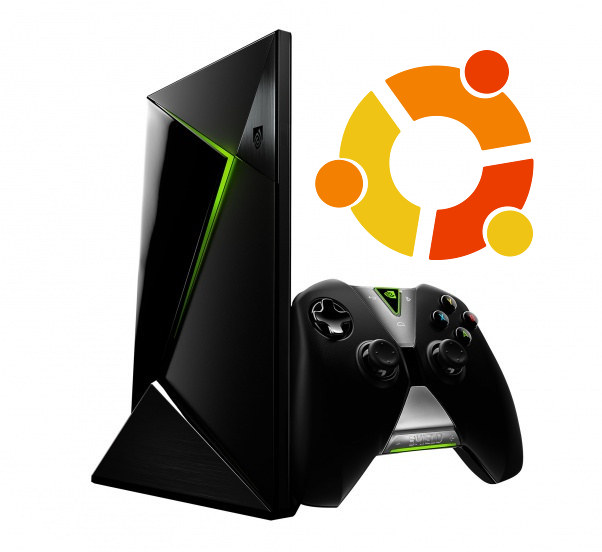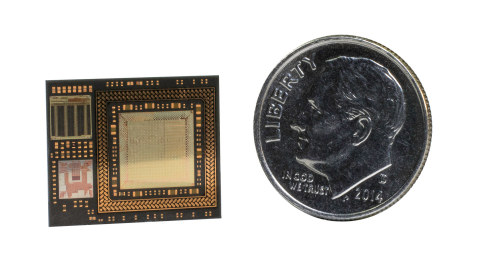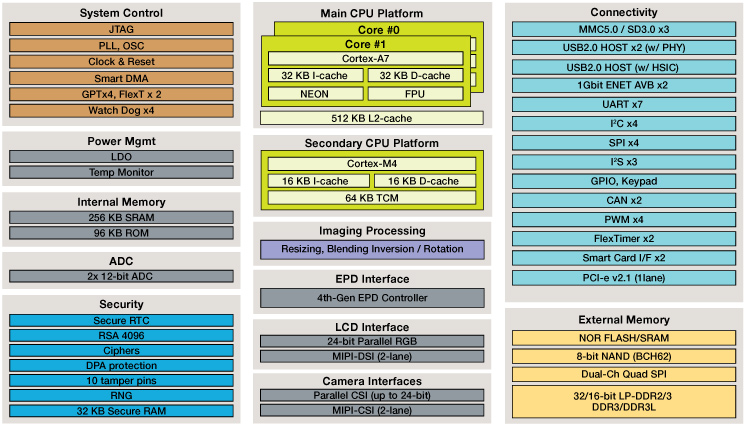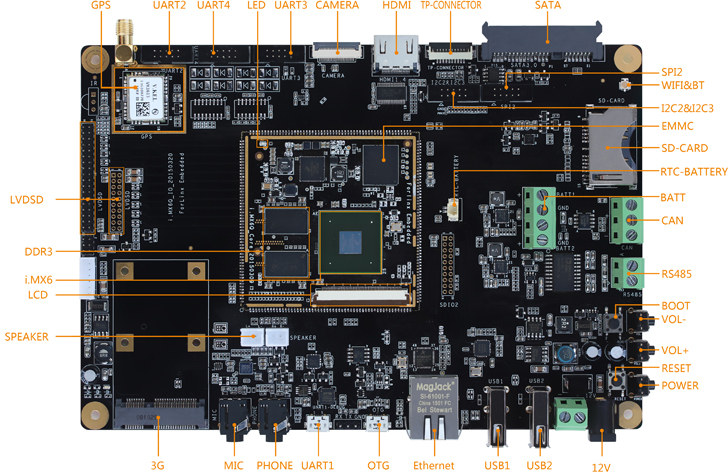Linus Torvalds released Linux Kernel 4.2 last Sunday: So judging by how little happened this week, it wouldn’t have been a mistake to release 4.2 last week after all, but hey, there’s certainly a few fixes here, and it’s not like delaying 4.2 for a week should have caused any problems either. So here it is, and the merge window for 4.3 is now open. I already have a few pending early pull requests, but as usual I’ll start processing them tomorrow and give the release some time to actually sit. The shortlog from rc8 is tiny, and appended. The patch is pretty tiny too. Go get it, Linus Some notable changes made to Linux 4.2 include: File systems New features for F2FS including per file encryption CIFS support SMB 3.1.1 (experimental) Cryptography – Jitter Entropy Random Number Generator, Chacha20 stream cipher and Poly1305 authentication (RFC7539),New RSA implementation. See lwn.net […]
Freescale i.MX6 DualPlus and QuadPlus SoCs Gets Faster 2D and 3D Graphics, Higher Memory Bandwidth
Freescale unveiled three new models for its i.MX 6 family processor for consumer, industrial and automotive markets in May. Two models are an upgrade to existing i.MX6 Quad and i.MX6 Dual processors, as the new i.MX 6QuadPlus and i.MX6DualPlus processors features four and two Cortex A9 cores, together with improved 2D and 3D GPUs delivering around 50% faster performance, an “optimized” SDRAM controller, more SRAM, and a prefetch and resolve engine. The third model, i.MX 6UltraLite, features a single ARM Cortex A7 core and hardware security, and targets applications such as electronic Point Of Sales (ePOS). That means there are now 9 i.MX6 processors, and today, I’ll focus on the two new “Plus” versions. Since they are based on the original i.MX6 Quad and i.MX6 Dual processors, the best way to have a look at these is to compare them to their predecessors. Features i.MX 6QuadPlus i.MX 6Quad i.MX 6DualPlus […]
HummingBoard Edge SBC Gets an mSATA/M.2 Connector, an eMMC Flash, and More I/Os
SolidRun launched its HummingBoard family last year with a board with a form factor similar to the Raspberry Pi, but instead of using a Broadcom processor, the boards were based on Freescale i.MX6 single, dual or quad core processors. The company has recently introduce a higher end board with Hummingboard Edge that adds an M.2 connector, eMMC flash, 7 to 36V DC power input, more camera interfaces, a DSI interface, and more GPIOs. The following comparison table shows the differences between the new Hummingboard Edge, and the older HummingBoard Pro and Base boards. HummingBoard-Edge HummingBoard-Pro HummingBoard-Base uSOM model i.MX6 based Solo to Quad Core uSOM Memory Up to 4GB DDR3 Storage uSD, eMMC, M.2/mSATA uSD, mSATA uSD Connectivity 1x RJ45*, 4x USB 2.0, mPCIE with SIM card holder 1x RJ-45*, 2x USB 2.0 Hosts, 2x USB 2.0 header, mPCIE half-size 1x RJ-45*, 2x USB 2.0 Hosts Media HDMI-out, LVDS, analog […]
Freescale i.MX7 96Boards Compliant Board Coming in Q4 2015
96Boards is an open hardware platform specification for 32-bit and 64-bit processors boards (64+32 = 96), but so far only 64-bit board have been launched or announced, and 32-bit boards were missing from the equation. Freescale will soon change that as they’ve partnered with Arrow Electronics on a 96Boards compliant board powered by Freescale i.MX7 Dual due to be released at the same time as i.MX7 enters mass production, which is scheduled for November 2015. Freescale i.MX6 96Boards (MCIMX7 ?) preliminary specifications: SoC – Freescale i.MX 7Dual with two ARM Cortex A7 cores @ 1.0 GHz, one ARM Cortex M4 core @ 266 MHz, and a 2D image processing engine (no 3D GPU) System Memory – TBD (Probably 512MB or 1GB RAM) Storage – micro SD card slot up to 64GB + flash? (TBC) Video Output – HDMI connector + DSI via HS expansion header Connectivity – Wi-Fi 802.11g/n and […]
Nvidia SHIELD TV Benchmarks in Ubuntu Shows Core i3 Like Performance
Nvidia SHIELD Android TV was announced this March with Nvidia Tegra X1 octa-core Cortex A57 + A53 processor. So far, I had not seen any Ubuntu or other Linux distribution port, but Michael Mirabel of Phoronix got remote access to a Shield TV PRO – model with a 500GB hard drive – running Ubuntu 14.10. It’s not clear who provided access, either Nvidia or third parties, but somebody posted an Ubuntu 14.10 port on XDA Developers Forums recently so it might be that one. He obviously ran Phoronix Test Suite on the device, and compared to it some other ARM devices (Compule Utilite, Jetson TK1), MIPS Creator CI20, low power x86 devices (Compute Stick, Intel NUC with Celeron N2820), and an Intel Core i3-5010u NUC. The Tegra X1 platform easily beats all other low power platforms, and comes close to the Core i3 mini PC in most tests. In the […]
Freescale Introduces a Coin-sized Single Chip Module (SCM) Based on Freescale i.MX 6Dual
As the Freescale Technology Forum 2015 is taking place in Austin, Texas, the company will announce a few new products over the 4-day conference. After the official launch of Freescale i.MX 7 series processors, Freescale unveiled a new product based on their existing i.MX6 platform with “i.MX 6Dual SCM” (Single Chip Module) that integrate a dual core i.MX 6Dual processor with 1 or 2 GB LPDDR2 (PoP), a 16MB NOR flash and a PMIC in a tiny, coin-sized module. Key feature of SCM-i.MX6D module: Freescale i.MX 6Dual application processor with two ARM Cortex A9 core @ 800 MHz and Vivante GPUs (2D/3D) System Memory – 1 or 2 GB LPDDR2 (PoP configuration) Storage – 16 MB SPI NOR (Micron N25Q128A13) Power Supply – Freescale PMIC PF0100 Dimensions – 17mm x 14mm x 1.7mm There are also 109 discrete components on the module. BSPs for Linux and Android will be provided. […]
Freescale Launches i.MX 7 Series Cortex A7 + Cortex M4 Processors for IoT Applications
Freescale announced plans for i.MX 7 and i.MX 8 processors in 2013, but it’s only in the last few months there have been some patchsets submitted to the ARM Linux Kernel mailing list, and so far all documentation was only available to companies and developers under NDA. Now the company has officially launched i.MX 7 series, and although all documents are not available yet, Freescale has released a factsheet providing an overview about the processors. Freescale i.MX 7 series processors targets applications such as wearables, e-readers, secure point-of-sale equipment, smart home controls, industrial automation products and other IoT solutions. Two processors are currently available: the single core i.MX 7Solo processor, and the dual core i.MX 7Dual processor. Both basically share the same specifications, but beside the extra Cortex A7 core, i.MX 7Dual also adds on extra USB host port, a PCIe interface, an extra Gigabit Ethernet port, and a 4th […]
Forlinx Embedded Introduces a Features-packed Freescale i.MX6 Industrial Board
Forlinx Embedded Technology has made several ARM9, ARM11, and Cortex A8 boards in the past, and they’ve now launched their first ARM Cortex-A9 board powered by Freescale i.MX6 Quad processor with 1GB RAM, 8GB eMMC Flash, HDMI, LCD, and LVDS interfaces, mPCIe connector for 3G module, SATA, GPS, CAN bus, RS485 port, and more. The board is composed of a baseboard and a 220-pin CPU module (soldered) with the following combined specifications: SoC – Freescale i.MX6 Quad with 4x ARM Cortex A9 cores @ up to 1.2 GHz and Vivante GC2000 3D GPU System Memory – 1GB DDR3 Storage – 8GB eMMC, SATA connector, and SD card slot up to 32GB Video Output / Display I/F – HDMI 1.4, LCD interface (7″ capacitive touch available), and 2x 8-bit LVDS interface. 4-wire resistive touch. Audio – 1x stereo audio jack, 1x mono microphone jack, 2x speaker headers Camera I/F – 1x […]



